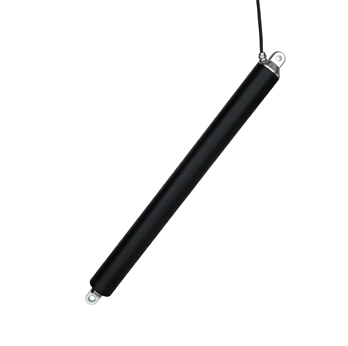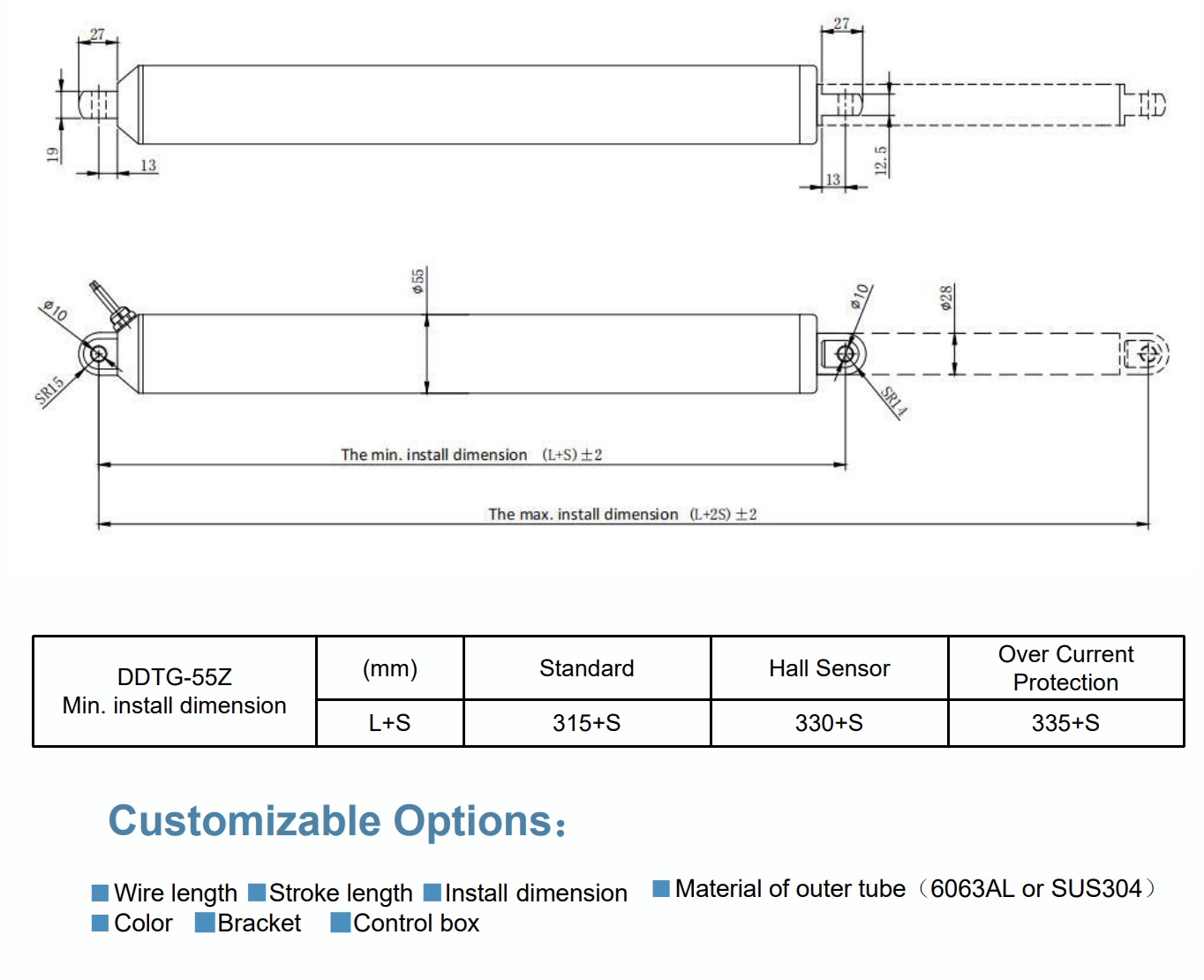At Jointway Leader, we understand that off-the-shelf solutions don’t always meet the demands of specialized applications. Our 24V linear actuators are engineered with flexibility in mind, ensuring seamless integration into your systems—no matter how unique your requirements. Here’s how we tailor our products to your exact needs:
1. Tailored Stroke Lengths for Precision Motion
Why It Matters:
The stroke length (the distance an actuator travels) directly impacts your system’s functionality. Too short, and it won’t reach; too long, and it wastes energy and space.
Our Range:
Standard Options: 50mm to 1,500mm strokes.
Customizable: Need a non-standard stroke? We design actuators up to 3,000mm or as short as 20mm for micro-applications.
Use Cases:
2. Adjustable Force Ratings for Heavy-Duty Performance
Why It Matters:
Force requirements vary by industry. Overloading an actuator causes wear, while underpowered units fail under stress.
Our Capabilities:
Standard Force: 200N to 15,000N.
Custom Force: Need more power? We engineer actuators up to 30,000N for industrial presses or as low as 50N for delicate lab automation.
Industries Served:
Agriculture: High-force actuators for heavy machinery like plows.
Robotics: Low-force, high-precision models for assembly lines.
3. Flexible Mounting Configurations
Why It Matters:
Mounting determines how the actuator integrates into your setup. Poor alignment leads to mechanical stress and premature failure.
Options Available:
Clevis Mounts: Ideal for pivoting applications (e.g., tilting solar panels).
Trunnion Mounts: Distribute load evenly for heavy-duty vertical lifts.
Flange Mounts: Secure actuators in tight spaces (e.g., conveyor systems).
Custom Brackets: Designed in-house for unique spatial constraints.
4. Smart Control Interfaces for Modern Automation
Why It Matters:
Compatibility with modern control systems ensures seamless integration into IoT-enabled environments.
Our Offerings:
CAN Bus Integration: For automotive and industrial networks.
IoT-Ready Models: Built-in Wi-Fi/Bluetooth for remote monitoring.
Analog/Digital Inputs: Compatible with PLCs, Arduino, and Raspberry Pi.
Feedback Sensors: Potentiometers, Hall effect, or encoder options for real-time position tracking.
Example:
A smart factory uses IoT-enabled actuators to sync with centralized AI systems, enabling predictive maintenance.
5. Material Customization for Harsh Environments
Why It Matters:
Environmental factors like saltwater, chemicals, or extreme temperatures demand specialized materials.
Options:
316 Stainless Steel: For marine or corrosive settings.
Anodized Aluminum: Lightweight yet durable for aerospace.
Polymer-Coated Rods: Resist abrasion in mining or construction.
6. Industry-Specific Certifications
Why It Matters:
Compliance ensures safety and regulatory approval for sensitive sectors.
Certifications We Offer:
Medical Grade: ISO 13485 for hospital equipment.
Explosion-Proof: ATEX/IECEx for oil and gas.
Food Safe: FDA-compliant materials for packaging lines.
7. The Customization Process: Simple and Collaborative
Consultation: Share your application needs with our engineers.
Prototyping: We develop a 3D model and test it virtually.
Testing: Rigorous quality checks in simulated environments.
Delivery: Receive your tailored actuator in as little as 4–6 weeks.
Why Choose Customization?
Optimized Performance: Actuators designed for your load, speed, and environment.
Cost Efficiency: Avoid over-engineering or retrofitting mismatched units.
Future-Proofing: Scalable designs adapt to evolving needs.
Case Study:
A wind turbine manufacturer needed actuators to withstand Arctic temperatures (-40°C) and high vibration. We delivered stainless steel models with reinforced bearings and thermal-resistant seals, reducing downtime by 60%.
 DDTG-16 Micro Tubular Linear Actuator
DDTG-16 Micro Tubular Linear Actuator
 DDTG-28 Micro Tubular Linear Actuator
DDTG-28 Micro Tubular Linear Actuator
 DDTG-38 Micro Tubular Linear Actuator
DDTG-38 Micro Tubular Linear Actuator





















